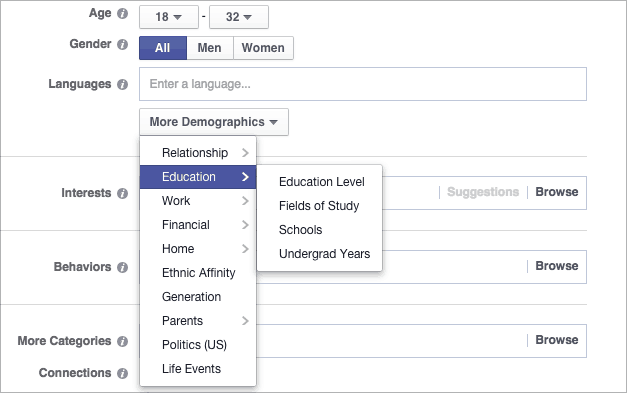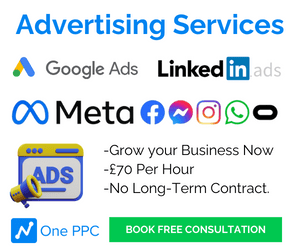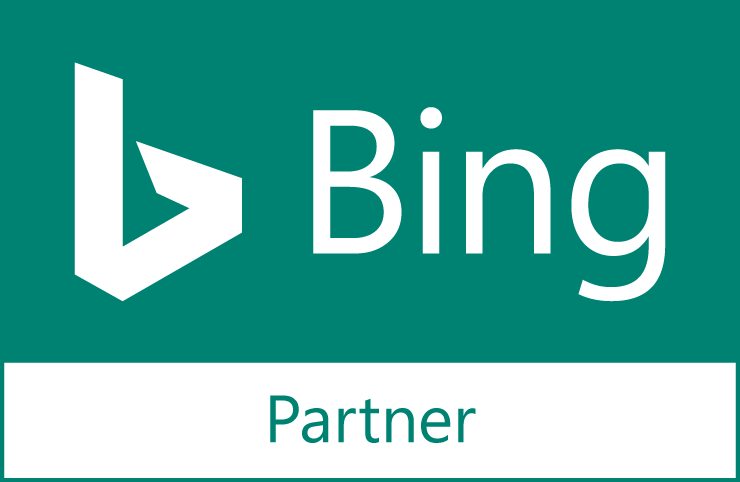Facebook Ads gives you an opportunity to advertise your business to millions of users all over the world. When you start using Facebook Ads to promote your company, there are various ways in which you target your ideal customer. If you’re looking to reach out to a specific audience, here is a useful guide to Facebook Ads demographic targeting.

Use demographic targeting to filter the Facebook user database. Each targeting option that is added, filters the audience by narrowing it down.

A brief introduction to Facebook Ads
Facebook Ads is an online advertising service provided by Facebook, the most popular social media platform in the world. With over 1 billion regular users, Facebook has evolved from a network of people eager to contact friends and family to a platform that can catapult businesses to the big time. By using Facebook Ads to advertise your products and services, you can attract new customers, get your brand name out there and improve the number and quality of leads you generate.

The benefits of Facebook Ads demographic targeting
If you want to succeed in business, you need to attract potential customers, but you also need to ensure that you connect with buyers who are likely to be need what you have to offer. You don’t want to be paying for adverts that are reaching people who aren’t going to buy from you. Facebook demographic targeting enables you to shrink the size of the pool and target customers that match your buyer persona. With this strategy, you can increase the quality of your leads, which should lead to more conversions. When you place adverts, you want them to be seen by people who will look at them and then take the next step to find out more. You don’t want your adverts to fall flat.
Many businesses sell products or services that are not going to appeal to every Facebook user, and demographic targeting is an excellent way of ensuring you get more hits than misses. You have control over the settings and criteria you apply, and you can create new campaigns to suit your business and your sales objectives. Consider the florist again. You could adapt your strategy to fit in with different demographics. If you’re pitching for Mother’s Day trade, for example, you could launch a campaign that targets men and women, parents and new parents. When wedding season is approaching, you can create another ad campaign that focuses on people who are engaged and those who have recently got engaged. You can further enhance your plan by using interest and behaviour targeting to look for users who have expressed an interest in florists and wedding flowers.

How to use Facebook Ads demographic targeting
Facebook advertising revolves around targeting audiences and connecting you with people who are likely to have a genuine interest in the services or products you offer. If you run a business, you probably have a target market in mind. It’s incredibly useful to create a buyer persona before you start using Facebook Ads. If you know exactly whose attention you wish to attract, you can use Facebook’s settings and audience tools to narrow down the pool of prospective customers and increase your conversion rate.
Facebook offers a host of targeting options, one of which is demographic targeting. Demographics relate to sections or segments of the population that are defined by a common trait or characteristic. Facebook allows you to utilise an array of demographics to make your advertising campaign precise and relevant. Examples of demographics you can employ for your Facebook Ad strategy include:
- Age
- Gender
- Location
- Relationship status
- Work and employment
- Education
- Type of home
- Income
- Generation
- Life events
- Dependents (whether you have children or not)
- Political interests
- Language
Lets say you want to target the dental industry. Enter the word dentist in the box and press browse, this will list the most popular demographics, interests and behaviours related to dentists. Start by selecting job title by clicking on this to include this as part of the audience.

Use the suggestions button to find related demographics like job titles to expand the audience size. You can also combine demographic targeting with interest targeting.

Narrow the audience down by schools, employers, field of study and more.

Selecting Demographic Targeting
You can manage your ad campaign using the control panel in your Facebook account. When you create a new advertising campaign, enter your objective and then choose which audience to target. You can do this by selecting specific audience demographics such as age and location, for example, men aged between 18 and 40 in Central London. Once you’ve chosen the demographics that are most relevant, you can specify how detailed you want your matches to be. For example, all matches must tick at least one of your chosen demographic boxes.
To see how demographic targeting works, take this example. Imagine you’re a florist. Valentine’s Day is fast approaching, and you want to take full advantage of one of the busiest and most lucrative days of the year. You can create a new advertising campaign to target people who are most likely to buy flowers in the run-up to St Valentine’s Day. You can set your demographics to target males aged between 20 and 55 who live within 10 miles of your store. If you specialise in luxury bouquets, you could also add an income bracket to target high earners who are more likely to splash out.

Facebook demographic targeting tips
To get the best out of Facebook’s targeting tools, bear these useful tips in mind:
- Define your ideal buyer before you launch a new campaign
- Monitor the success of individual campaigns
- Learn as much as you can about your audience
- Focus on a local demographic if your main goal is to drive business to a physical store, salon, restaurant or hotel
- Make use of advanced targeting options
- Use the audience definition tool to see how far your adverts could reach. Facebook generally recommends defining a potential audience of at least 10,000 people
- Integrate different targeting options to make your campaign even more effective. You can combine demographics targeting with interest targeting and behaviours.
Auience Size
When building an audience, Facebook will give an estimate of the size on the right hand side panel. Make sure to not make the audience too small.

Location Targeting - Radius
If you are targeting locally, you can use radius targeting by miles of kilometres.

You can target people in the location at the exact moment, people who live in the location, travellers in the location or people recently in the location.

It is possible to target by country, region, city, town and more.

Saved Audiences
It is possible to save audiences and reuse them in other campaigns.

Conclusion
Facebook has a huge audience, but not every member is going to be interested in the adverts you post or the products you sell. To maximise your chances of benefiting from Facebook Ads, it pays to narrow down the options and target users who fit your ideal buyer persona. If you’re paying for adverts, you want them to have a positive impact. Use Facebook’s targeting tools to select which groups of people you would like to reach out to. There are several demographics you can choose from, including location, age, and gender, and by adjusting your settings, you can aim your adverts at people who want to see them. Advertising on Facebook can increase the number of leads you generate, but crucially, it also increases the quality of those leads. The stronger the lead, the higher the chance of conversion.









